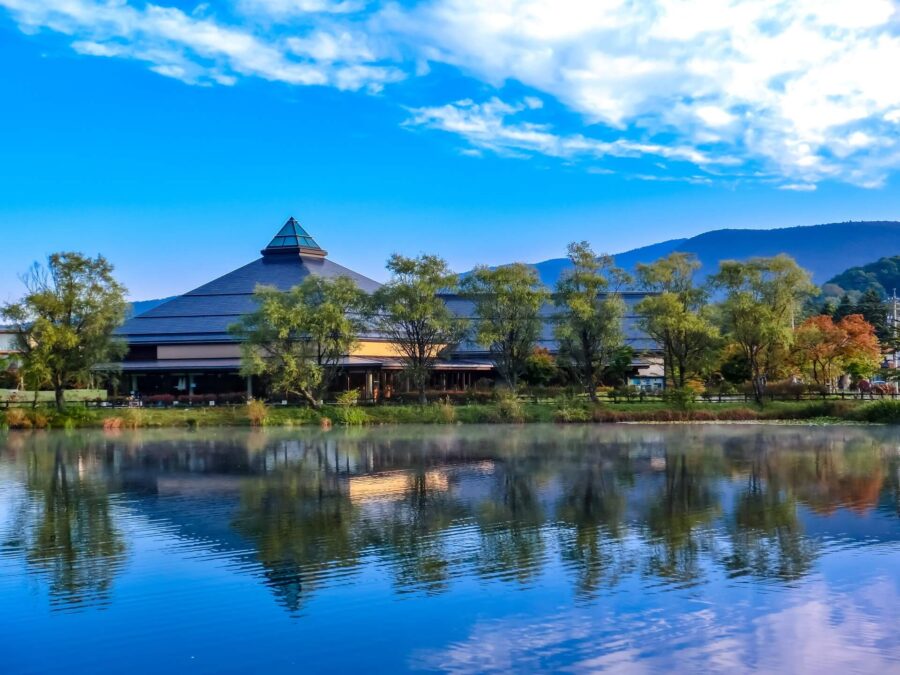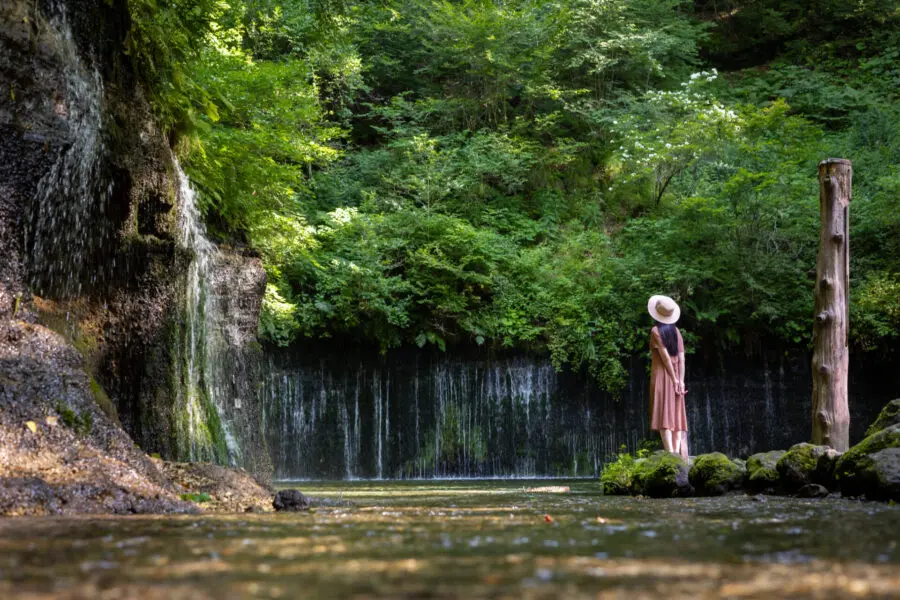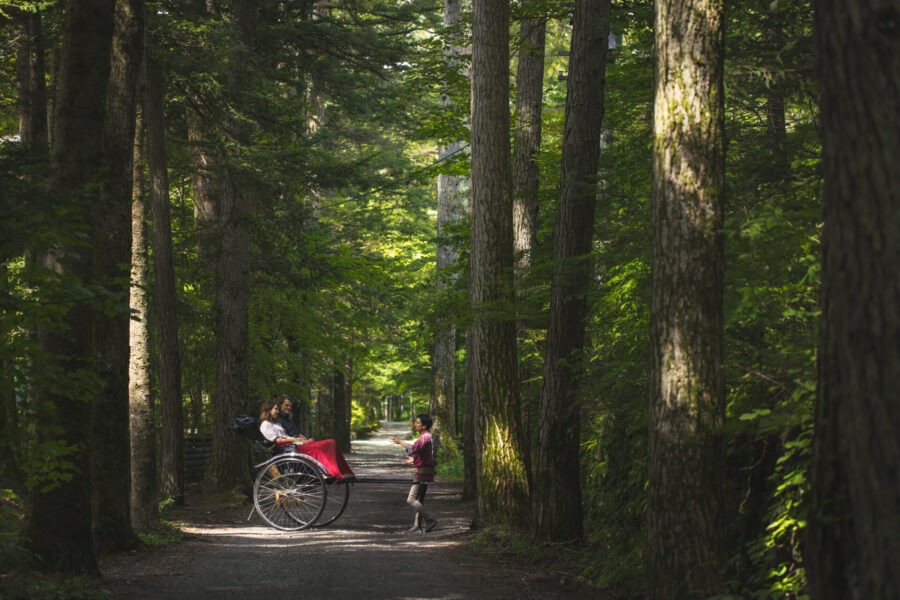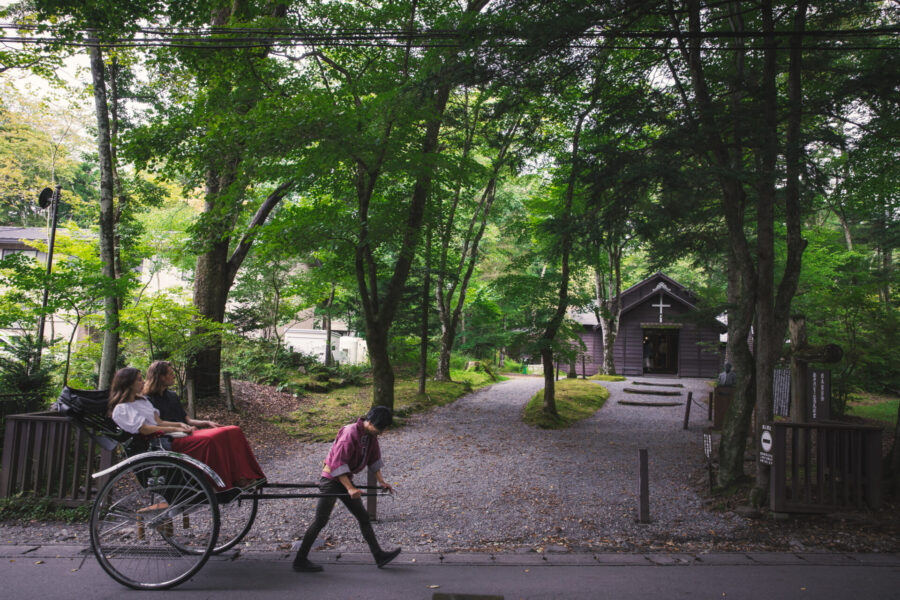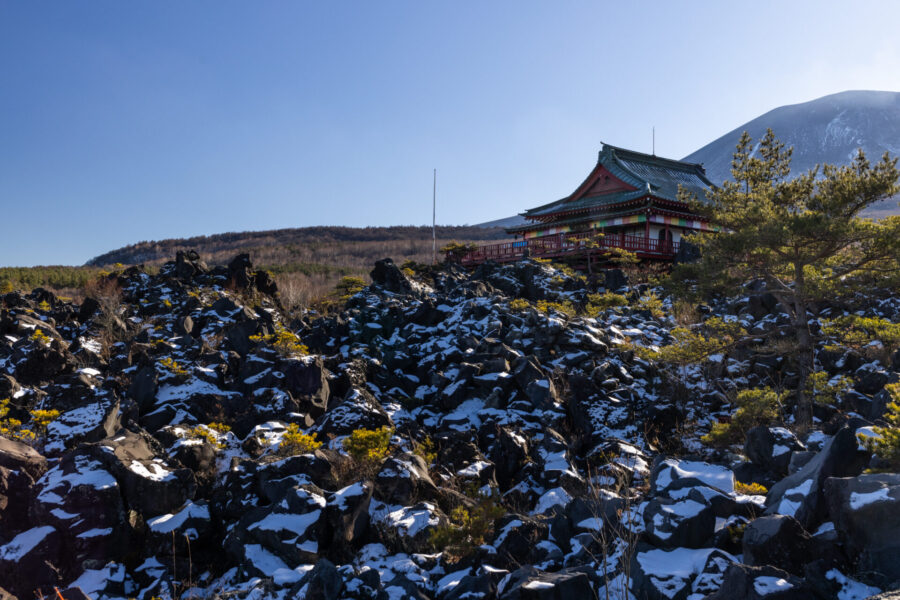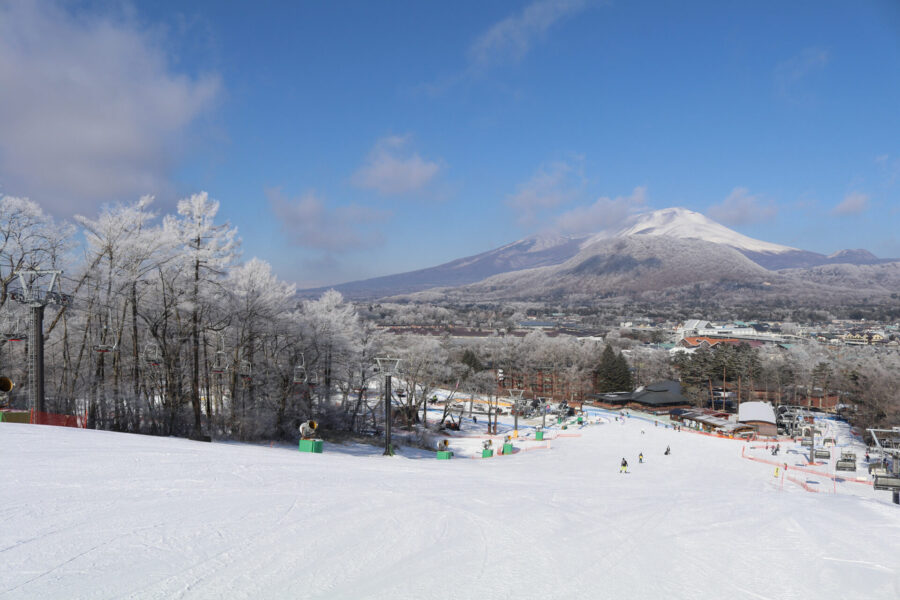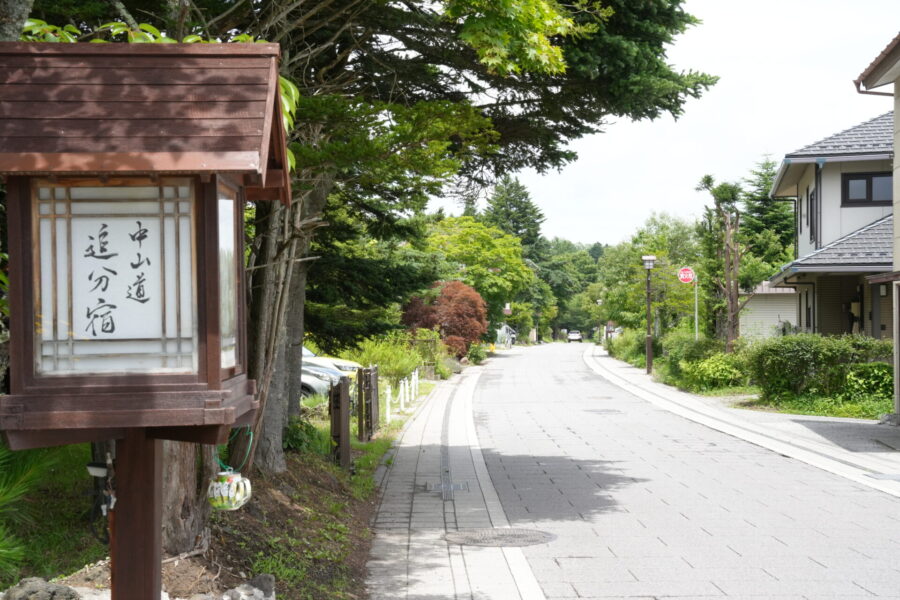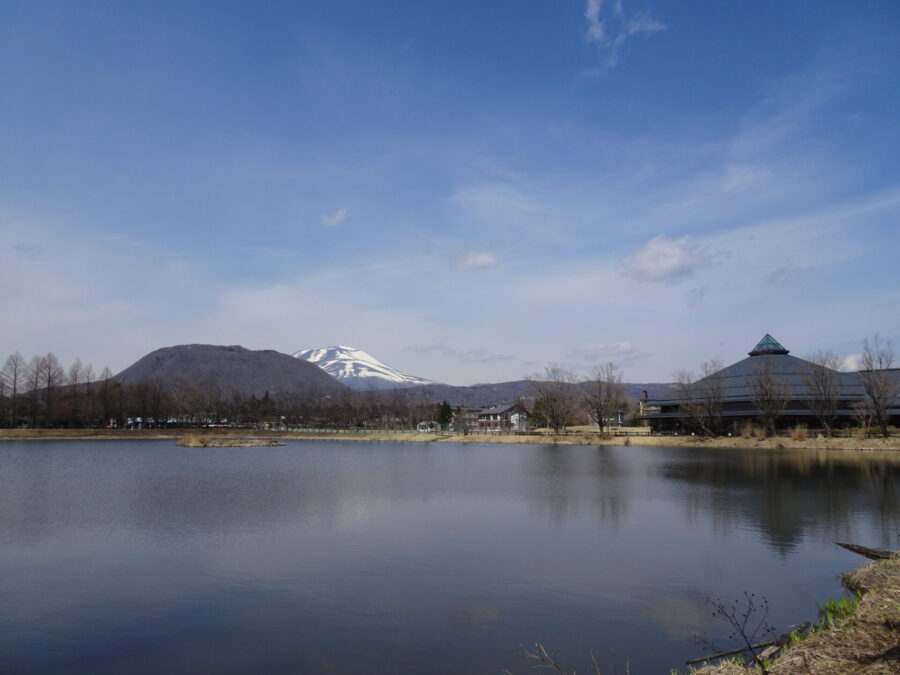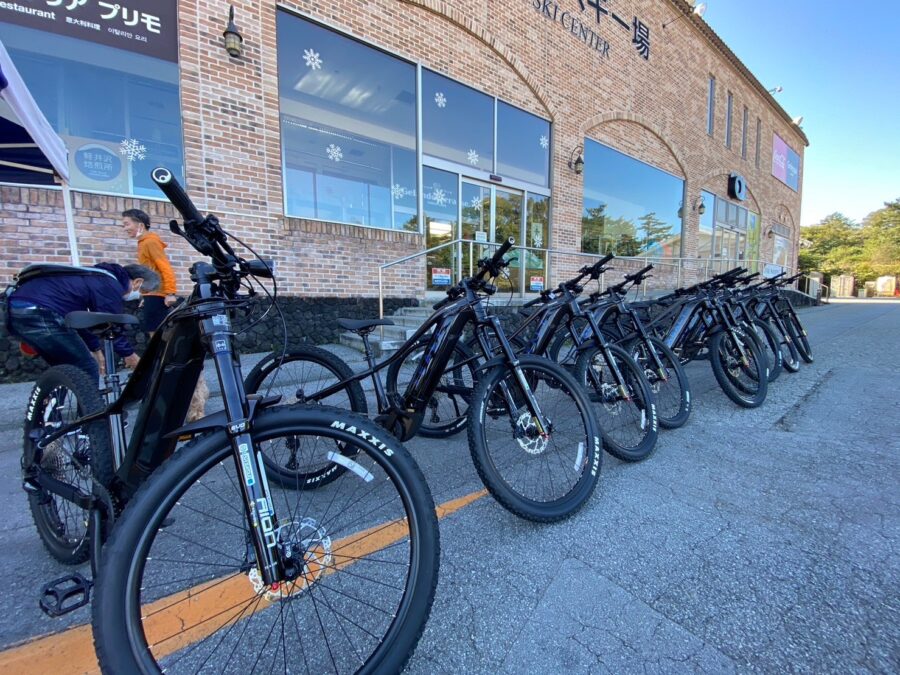Karuizawa Museum Map Tour
Model Course
In Karuizawa, visitors can experience various genres of art, both historical and modern.
Why don't you get inspired by the art you can touch in Karuizawa?
You may want to immerse yourself in a space that you cannot feel in everyday life.
*This is not a model course.
- A.C.Shaw Memorial House
- Saisei Muroo Memorial Hall
- Karuizawa Small Karuta Museum
- Trick Art Museum Karuizawa
- Wakita Art Museum
- Karuizawa New Art Museum
- Karuizawa Kataezome Museum
- Small Art Museum Karuizawa Soka-kan
- Karuizawa Ando Art Museum
- Karuizawa Hiroshi Senju Art Museum
- Mitsuhiko Asami Memorial Hall
- Beniko Fukazawa Wild Flower Museum
- Paine Art Museum
- Karuizawa Highland Library
- Eltz Toy Museum, Karuizawa (Moose Forest)
- Karuizawa Picture Book Forest Art Museum (Moose Forest)
- Le Vin Museum
- Former Mikasa Hotel, Important Cultural Property (closed for renovation)
- Minamigaoka Art Museum (Sangoso Museum)
- Karuizawa Museum of Contemporary Art
- museum of historical folklore
- Former Villa of Fumimaro Konoe (Ichimura Memorial Hall)
- Sezon Museum of Contemporary Art
- Tasaki Museum of Art
- Oiwajuku Folk Museum
- Hori Tatsuo Literature Memorial Hall
- Nakasendo 69th Street Museum
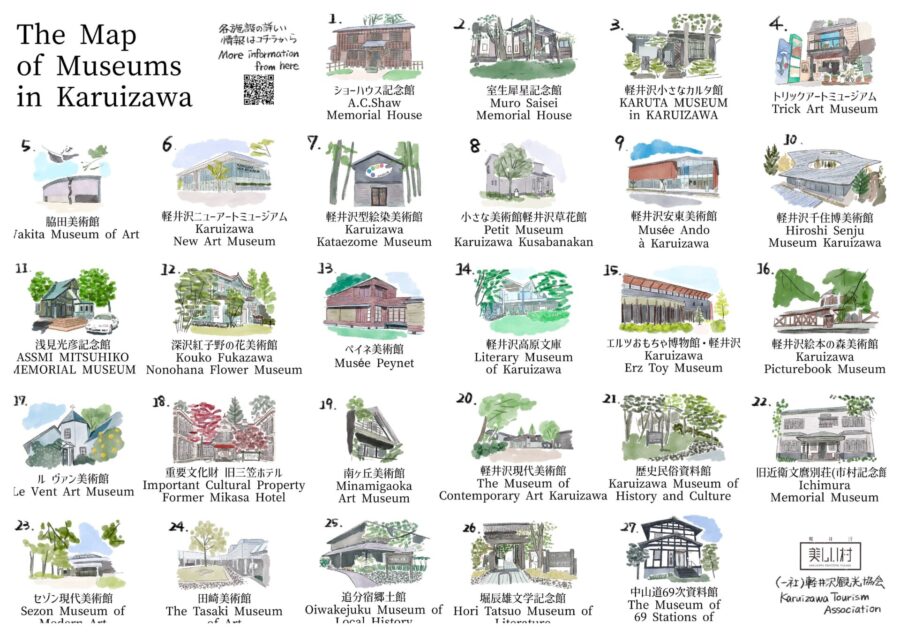
SPOT 1
A.C.Shaw Memorial House
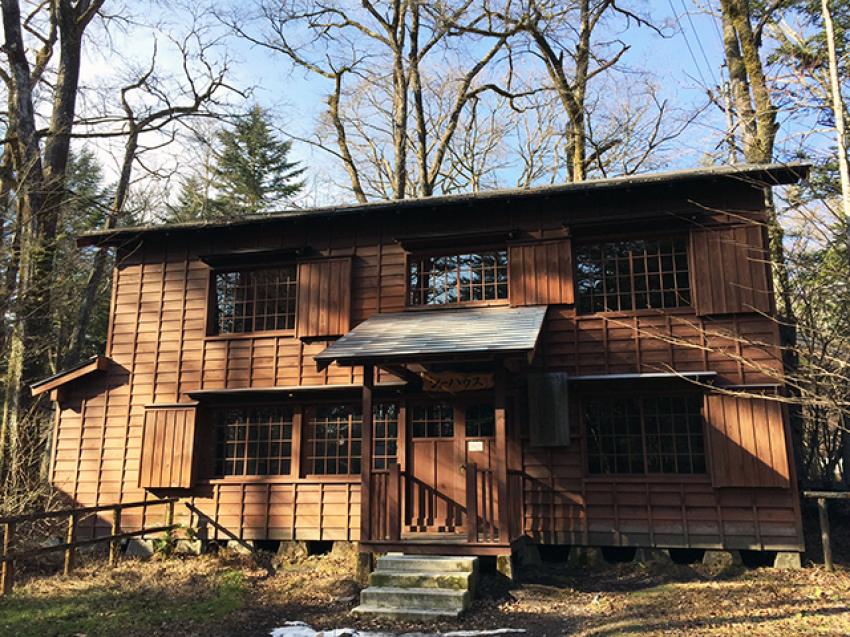
A.C.Shaw Memorial House
Hours: 9:00 - 17:00 (9:00 - 18:00 from July to September)
Closed: Thursday
Open daily from July 15 to September 15
(Closed from November 4 to March 31 of the following year)
Admission: Free
SPOT 2
Saisei Muroo Memorial Hall

Saisei Muroo Memorial Hall
Saisei Muroo was a leading poet and novelist of Japanese literature active from the Taisho period to the mid-Showa period. This memorial hall is a renovated villa built in 1931, where Saisei spent every summer until 1961, the year before his death. In this house, Saisei had many interactions with many writers, including Hori Tatsuo, Tsumura Nobuo, Tachihara Dozo, Kawabata Yasunari, and Shiga Naoya.
SPOT 3
Karuizawa Small Karuta Museum
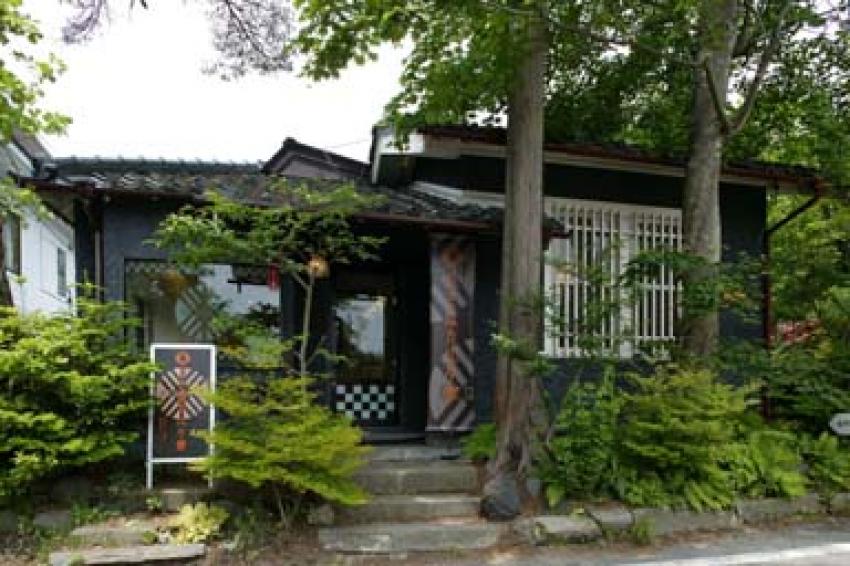
Karuizawa Small Karuta Museum
The museum is small, but fortunately the karuta and cards are not that big, so many varieties can be seen by customers.
Although the museum is still in its infancy as a resource center, we hope that visitors will feel familiar with various types of Hyakunin Isshu, local karuta, hanafuda (Japanese playing cards), playing cards, card games, and other unusual items.
SPOT 4
Trick Art Museum Karuizawa
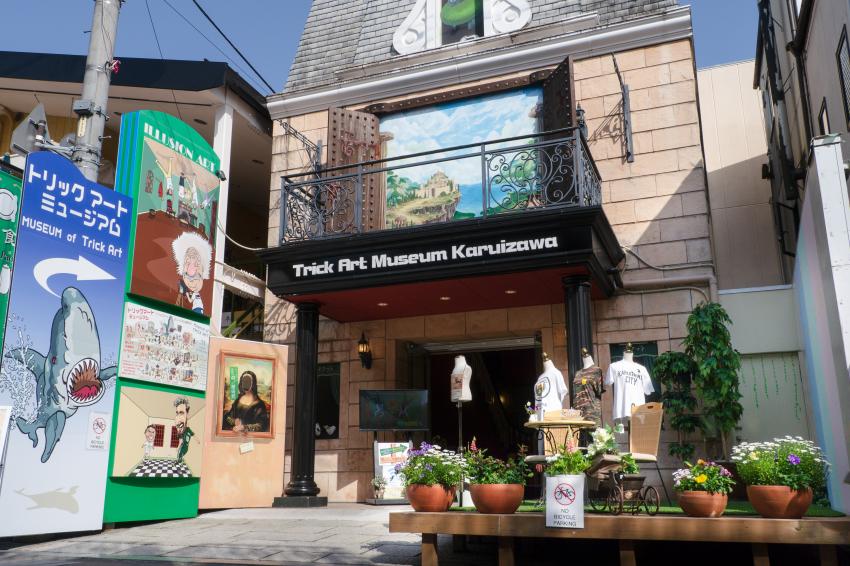
Trick Art Museum Karuizawa
Trick Art Museum Kyu-Karuizawa is a trick art museum where visitors can have a three-dimensional visual experience. Visitors can experience trick art by seeing, touching, and photographing psychological illusions and tricks!
In trick art, the way you see the work changes depending on where you look at it. You can try looking at it from various angles to see if it is three-dimensional or flat, up, down, left, or right, and touch the work to see if it is real! Photography is allowed inside the museum, so bring your camera and take lots of fun pictures!
Of course, you are free to take pictures. Parking is free for 90 minutes, so please use the parking lot to explore the surrounding area.
SPOT 5
Wakita Art Museum
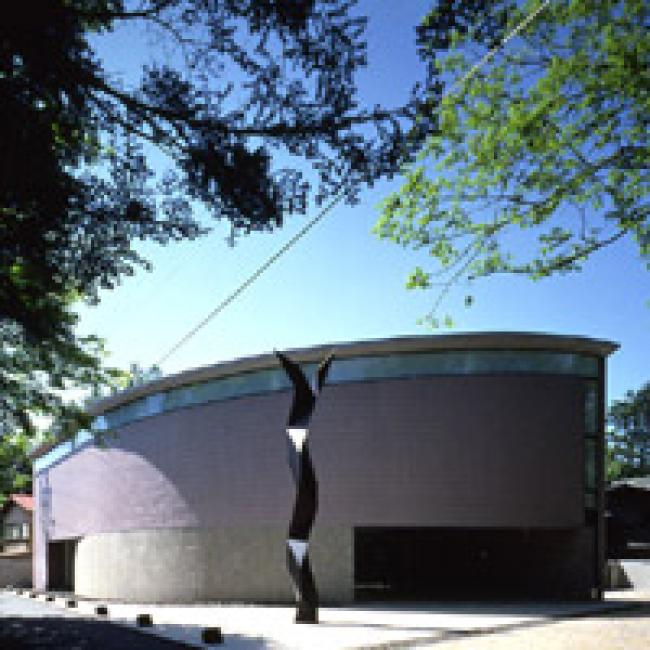
Wakita Art Museum
The universe of Wakita's paintings, with their poems of the heart and mind, and his penetrating view of nature and life, is often compared to a chamber music with clear tones.
The elegant "music of colors" is alive in the green grove of the Wakita Art Museum. The museum houses approximately 1,000 oil paintings, drawings, prints, and other works by Wakita Kazu, a representative of the contemporary Western-style painting world, and exhibits a complete picture of the artist from his period of study in Germany in the 1920s to his current works after the Second World War. The museum is also actively developing art programs that seek to connect with the present day, creating a refreshing cultural image in the Karuizawa area.
SPOT 6
Karuizawa New Art Museum
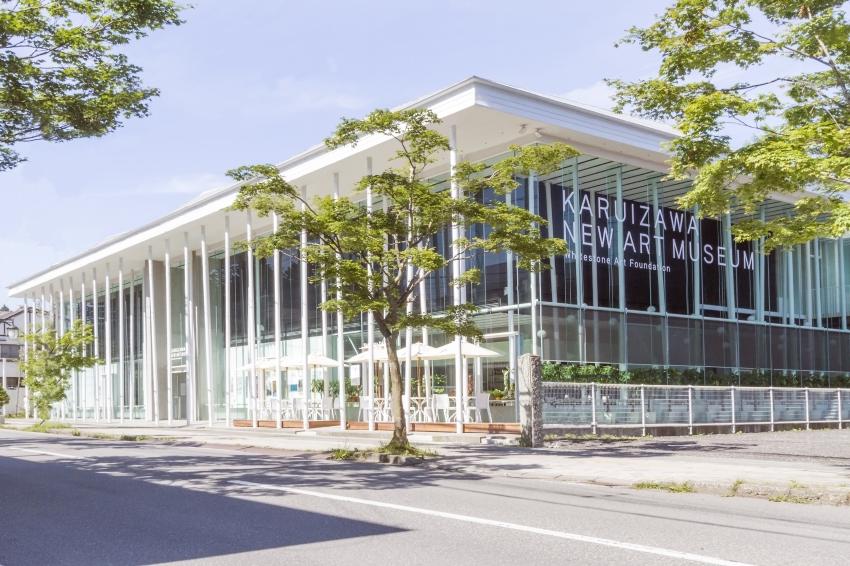
Karuizawa New Art Museum
The special exhibition will include not only the world's leading contemporary Japanese artists and their group exhibitions, but also overseas artists, with an innovative approach that will meet the expectations of art fans from both Japan and abroad. The museum also plans to actively collect works by Japanese avant-garde artists, including works by avant-garde artists who belonged to the Gutai Art Association, whose international reputation has grown remarkably in recent years.
SPOT 7
Karuizawa Kataezome Museum
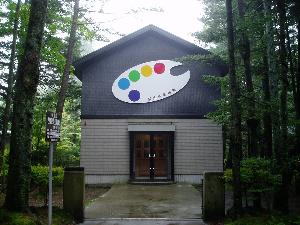
Karuizawa Kataezome Museum
The Karuizawa Museum of stencil dyeing was built by the late Kyoko Kobayashi, who devoted more than 40 years to stencil dyeing under the tutelage of the late Keisuke Serizawa, an intangible cultural asset and living national treasure.
The museum and art works were donated to the town in 2000, and the exhibits in the museum are changed each year according to a different theme.
Visitors can see katae dye works full of vivid colors and exoticism, and on the second floor, folk crafts from around the world collected by Kyoko Kobayashi are on display, giving visitors a sense of the unique atmosphere that she must have given to her works.
~
The stencil dyeing technique is to carve a pattern on a piece of astringent paper (Japanese paper coated with persimmon astringent to make it stronger), place the paper stencil on a piece of Japanese paper or cloth, apply antiseptic paste, and brush colors onto the unglued areas with a brush.
SPOT 8
Small Art Museum Karuizawa Soka-kan
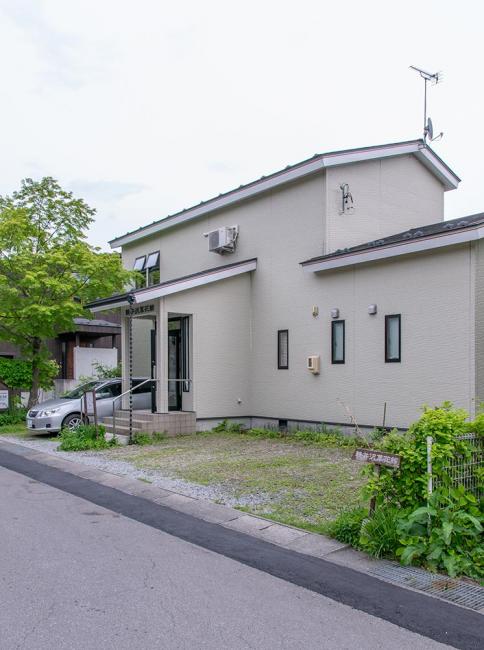
Small Art Museum Karuizawa Soka-kan
This is a private museum of Ishikawa Koichi, a painter who loved and painted flowers and plants in Karuizawa.
The museum has a collection of more than 3,000 sketches (950 species) of flowers and plants native to Karuizawa and more than a hundred oil paintings.
SPOT 9
Karuizawa Ando Art Museum
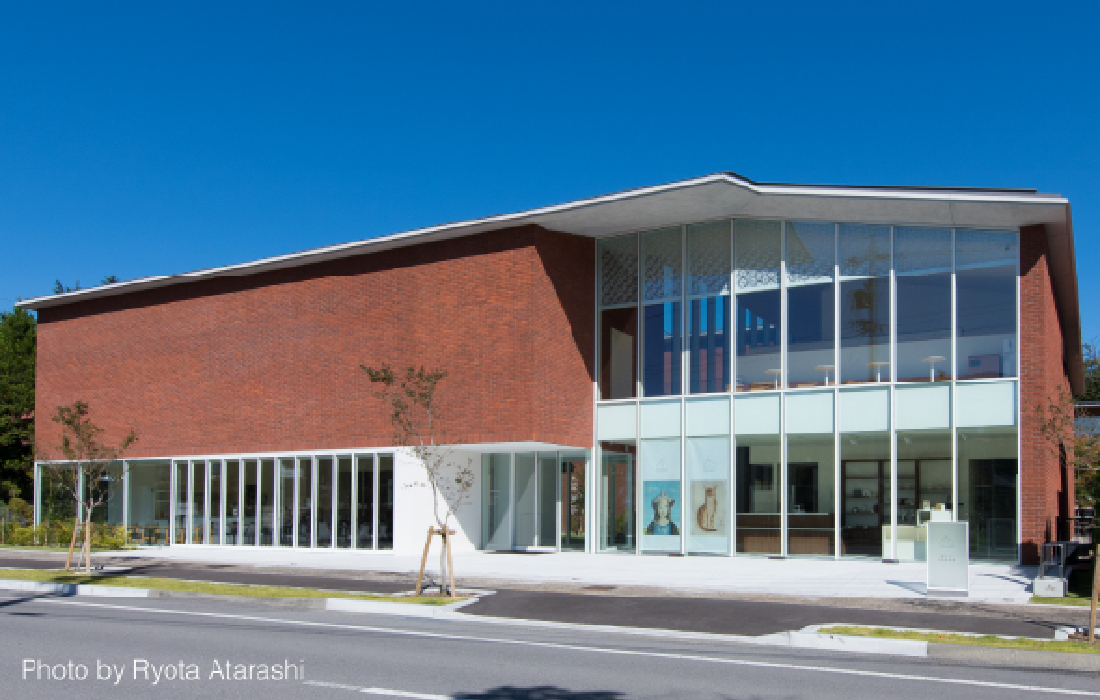
Karuizawa Ando Art Museum
This private museum exhibits only the works of the painter Tsuguharu Fujita. The museum has a collection of about 200 works, mainly paintings of "Girl," "Cat," and "Madonna and Child," which provide visitors with a perspective on Fujita's artistic career, which was marked by a number of strange fates. The "Milky Underground" works that swept Europe are also on display. A café for the "HARIO" brand of coffee utensils is also located here.
SPOT 10
Karuizawa Hiroshi Senju Art Museum
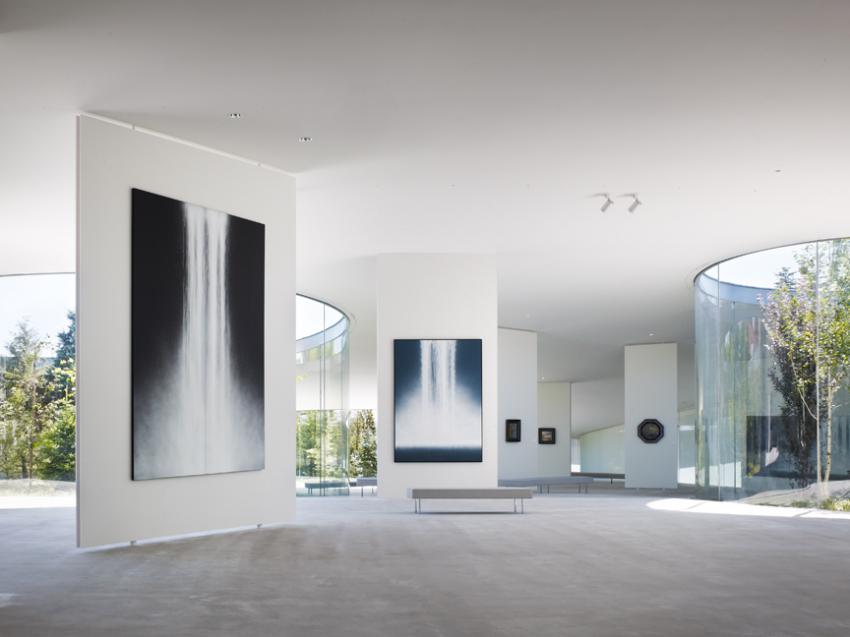
Karuizawa Hiroshi Senju Art Museum
This museum exhibits a valuable collection of about 50 works by world-renowned Japanese-style painter Hiroshi Senju, from his early works to his latest creations. The interior of the museum, designed by architect Ryue Nishizawa, is filled with natural light, creating a bright and open exhibition space. Other facilities include a color leaf garden with approximately 60,000 plants and more than 150 varieties of flowers and grasses, Boulanger Asanoya, a museum store, and more.
SPOT 11
Mitsuhiko Asami Memorial Hall
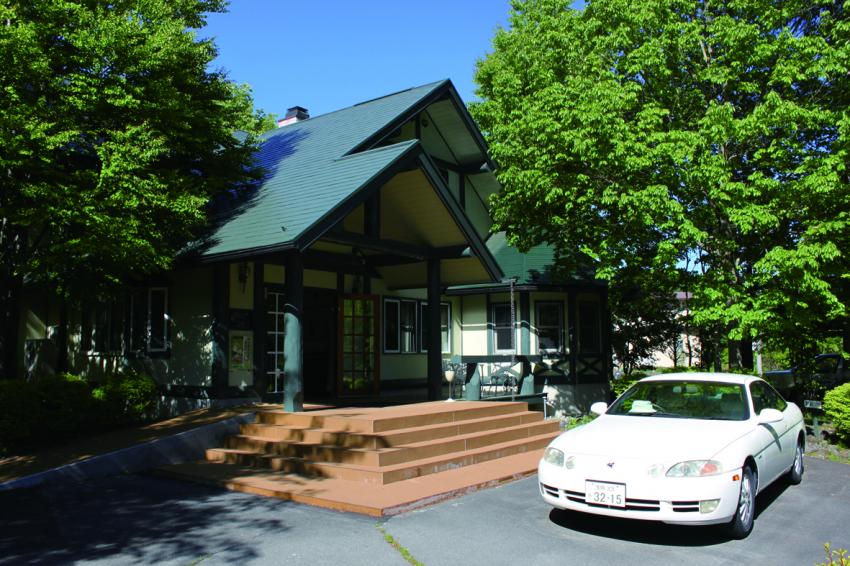
Mitsuhiko Asami Memorial Hall
The museum opened in April 2016 to pass on to future generations the achievements and intentions of Yasuo Uchida, a Karuizawa-based writer who set his works throughout Japan and continued to write about the scenery and emotions of people in various regions. The museum exhibits items related to Uchida's works, including Mitsuhiko Asami, the famous detective created by Yasuo Uchida, as well as the author's handwritten manuscripts and personal belongings.
There are also a variety of photo spots. Visitors can sit at the desk in the study that Yasuo Uchida actually used, or play the role of a famous detective or a corpse at the corpse discovery site. ...... There are many ways to enjoy yourself!
SPOT 12
Beniko Fukazawa Wild Flower Museum
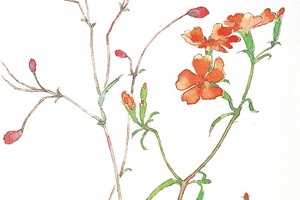
Beniko Fukazawa Wild Flower Museum
A two-story wooden Western-style building built in 1911. It used to be the central building of Ginza-dori in Old Karuizawa and a place for villa residents to exchange information. Designated as a National Tangible Cultural Property in May 2008.
SPOT 13
Paine Art Museum
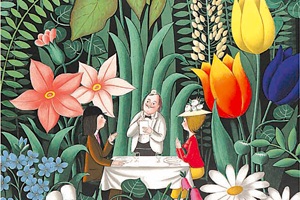
Paine Art Museum
A boy and a lovely girl in a mountain high hat, always cuddled up together. French painter Raymond Peynet is well known around the world for his "Peynet's Lovers" series. Original paintings, lithographs, and his favorite painting materials are on display.
SPOT 14
Karuizawa Highland Library
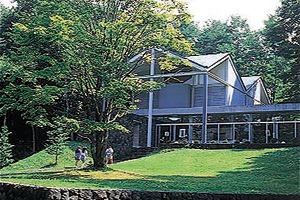
Karuizawa Highland Library
Karuizawa Kogen Bunko opened in August 1985 on the shores of Lake Shiozawa with a splendid view of Mount Asama in order for visitors to experience the rich literary world. The villa loved by Tatsuo Hori was moved from the former Karuizawa and is open to the public. The villa where Tatsuo Arishima died of love, "Jogetsuan", and the study of Yayoko Nogami were also moved to the site. In the front yard, there is a monument to the poet "Dozo Tachihara" and in the back yard, there is a monument to the literature of Shinichiro Nakamura.
SPOT 15
Eltz Toy Museum, Karuizawa (Moose Forest)
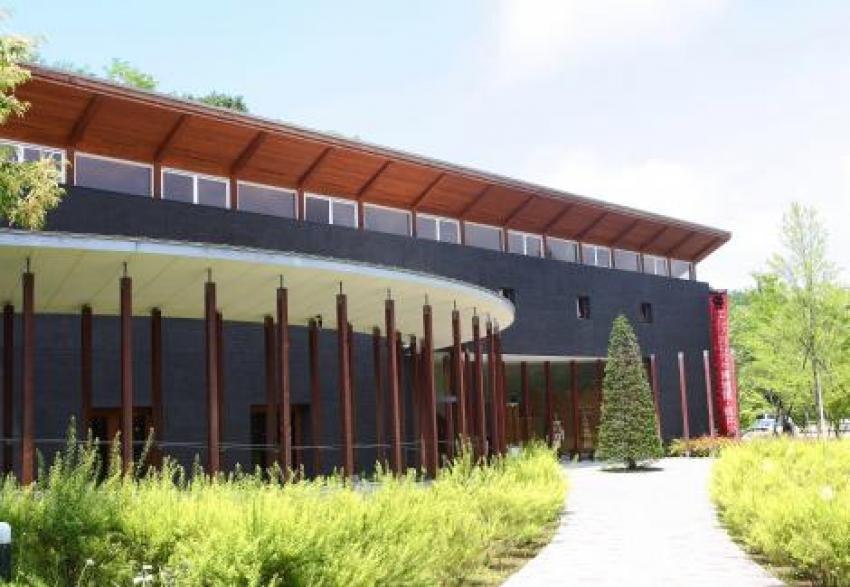
Eltz Toy Museum, Karuizawa (Moose Forest)
This museum collects and exhibits high-quality European educational toys that provide good play and wooden toys that have been handed down for more than 300 years in the Erz region of Germany by meisters (craftsmen who pass on advanced skills).
At the "Wooden Toy Shop," visitors can purchase traditional wooden crafts directly imported from the Erz region of Germany. The "Picture Book Shop" offers nostalgic picture books, Western picture books, and original goods.
SPOT 16
Karuizawa Picture Book Forest Art Museum (Moose Forest)
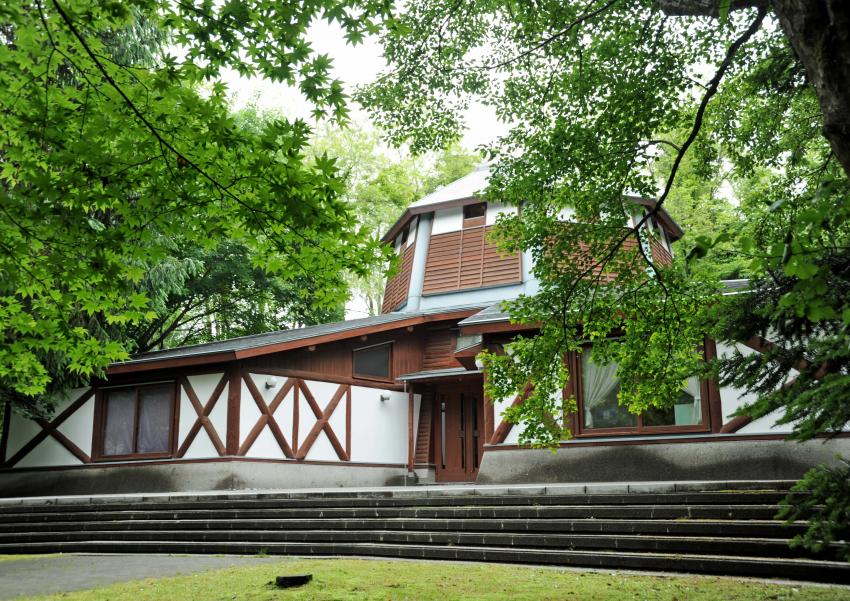
Karuizawa Picture Book Forest Art Museum (Moose Forest)
This museum specializes in picture books, exhibiting rare original illustrations and first editions of picture books, mainly European and American picture books. There are seasonal exhibitions and a picture book library with a collection of approximately 1,500 books, and a permanent exhibition of "Peter Rabbit™" in the third exhibition hall. Visitors can immerse themselves in the nostalgic world of picture books.
The "Picturesque Garden," which connects the museum to the surrounding forest, was created by British landscape designer Paul Smither. Enjoy the changing nature of Karuizawa as it changes with the seasons.
SPOT 17
Le Vin Museum
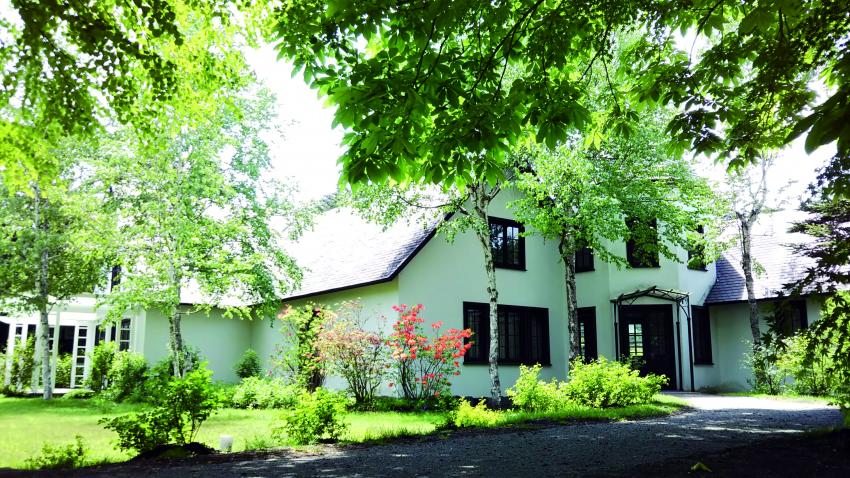
Le Vin Museum
The museum opened in 1997 in a nearly exact replica of the Bunka Gakuin building founded and designed by Isaku Nishimura in Surugadai, Tokyo in 1921. At a time when school buildings looked like barracks, the delightful architecture and gardens designed by Isaku Nishimura in the style of English cottages were the talk of the town at the time.
We hope to make this museum a place where more people can understand the Bunka Institute, which aims to educate students to develop natural and unique personalities and to form people with an artistic fragrance.
In the permanent exhibition, we plan not only to remember the past, but also to show how the Bunka Institute is changing into the form of a new era while inheriting its ideas, the dreams and winds of the Taisho era. In the exhibition room, works by artists active in various fields will be planned and introduced each year.
SPOT 18
Former Mikasa Hotel, Important Cultural Property (closed for renovation)
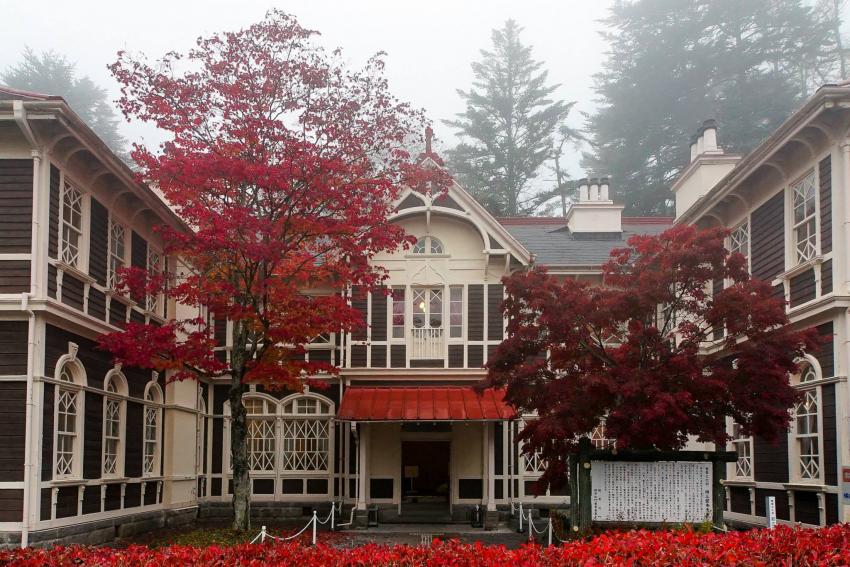
Former Mikasa Hotel, Important Cultural Property (closed for renovation)
Designed and built by Japanese, this is a purely Western-style wooden hotel from the late Meiji period. The hotel still retains the appearance of having been visited by famous people who built the Meiji and Taisho eras. In May 1980, it was designated as a National Important Cultural Property.
The former Mikasa Hotel is currently closed for conservation and repair work, including seismic reinforcement.
We apologize for any inconvenience this may cause and ask for your understanding. It is scheduled to reopen in the fall of 2025.
SPOT 19
Minamigaoka Art Museum (Sangoso Museum)
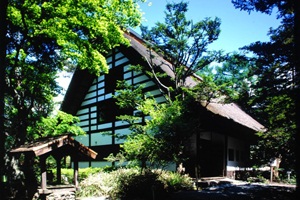
Minamigaoka Art Museum (Sangoso Museum)
The museum exhibits art and culture from all ages and cultures. The museum consists of the main building, which houses the art museum floor, and the museum archives, which is an old private house, Sangoso (a registered national tangible cultural property), which is a relocated house of a wealthy farmer from the late Edo period in Shioyama City, Yamanashi Prefecture, open to the public.
SPOT 20
Karuizawa Museum of Contemporary Art
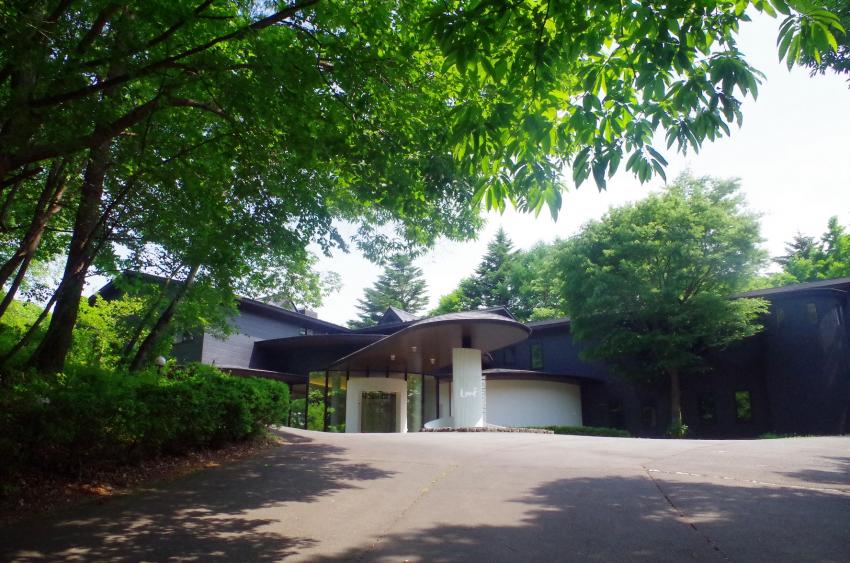
Karuizawa Museum of Contemporary Art
Under the theme of "Painters Across the Sea," the exhibition focuses on works by acclaimed Japanese artists such as Yayoi Kusama, Yoshitomo Nara, Takashi Murakami, and Ayako Rokkaku, all of whom are also highly acclaimed overseas. Visitors can enjoy contemporary art in a quiet space surrounded by green trees. Artworks are also available for purchase in the adjoining gallery. The museum store offers a wide range of raisonné and goods from the exhibiting artists. The sketchbooks that visitors can draw freely on the large table in the store are also very popular.
SPOT 21
museum of historical folklore
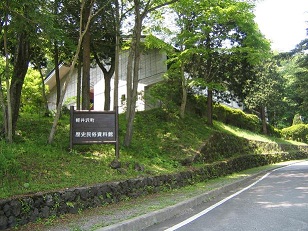
museum of historical folklore
This facility preserves and exhibits materials related to the cultural history of the road, such as earthenware from the Jomon period and the history of the inns along the Nakasendo Highway, as well as materials introducing the development of the area as a vacation home after the Meiji period and daily tools that supported life in the high-cool climate.
Chinese ceramics from the collection of the late Mr. Saburo Yoshizawa are also on display, and in the garden by the entrance is a monument to Midoriko Sugiura, which was moved from after her villa in Nakakaruizawa.
Please also see "History and Folklore Museum News" on the related website.
SPOT 22
Former Villa of Fumimaro Konoe (Ichimura Memorial Hall)
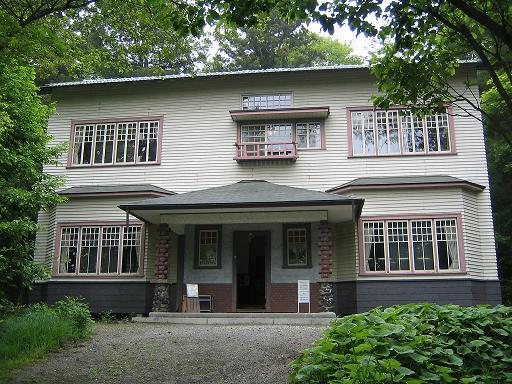
Former Villa of Fumimaro Konoe (Ichimura Memorial Hall)
The memorial building was built in the Taisho era (1912-1926) by Amerika-ya, a Western-style house building company, and was purchased by Fumimaro Konoe from Genjiro Nozawa as his villa in 1926. In 1932, Ichimura Imachizo, a political scientist and friend of Konoe, purchased the house, and it was moved to Minamihara the following year. Later, in 1997, it was moved to its current location, at the east end of Amamiya Pond, and was donated to the town by the bereaved family of the Ichimura family.
The museum exhibits materials related to Fumimaro Konoe, Imachizo Ichimura, who devoted himself to the development of Minamihara as a vacation home, and his wife, Kiyoji, and Keijiro Amamiya, who became honorary residents of the town.
The building was designated as a Karuizawa Town Cultural Property (Designation No. 19) as of May 24, 2008.
The exterior walls were partially repainted and restored to their original appearance at the time of the Minamihara relocation during the seismic reinforcement and other construction work in FY 2009.
Admission
Adults 400 yen (groups 300 yen)
Children 200 yen (groups 150 yen)
(Shared with the museum. Groups of 20 or more people.)
Admission is free for infants and toddlers.
*Persons with a physical disability certificate, rehabilitation certificate, or health welfare certificate for the mentally disabled and one accompanying caregiver may enter free of charge upon presentation of the certificate.
SPOT 23
Sezon Museum of Contemporary Art
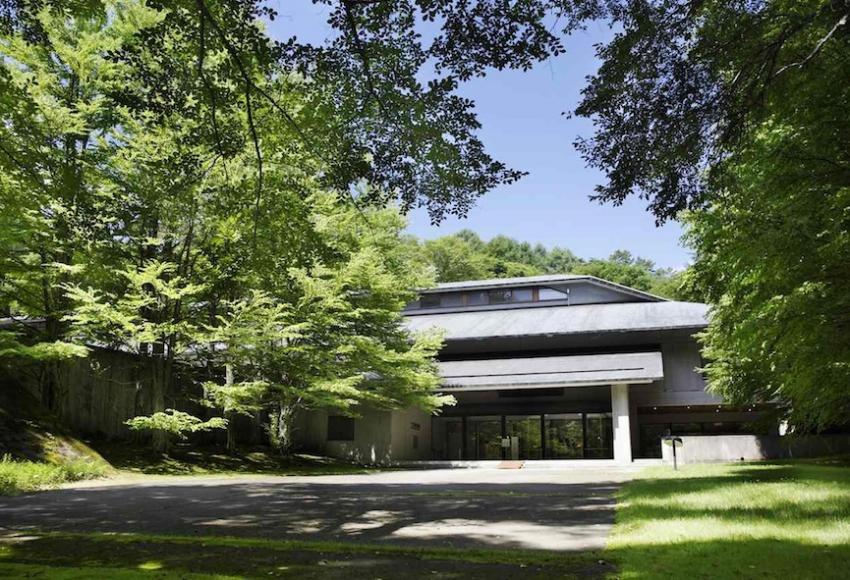
Sezon Museum of Contemporary Art
The collection consists of more than 500 works by Wassily Kandinsky and Paul
the originators of abstraction in the early 20th century, and European art from Clay to Dadaism, Surrealism, Unformel, and Nouveau Réalisme
. In the U.S., the collection features abstract expressionist artists such as Jaxun Pollock and Mark
Rothko to Neo-Dada and Pop Art, with the addition of artists from the 1980s such as Kiefer and Clemente
. The collection also features works by artists representing postwar Japan
.
The museum is closed for renovation (until April 2026 *scheduled).
SPOT 24
Tasaki Museum of Art
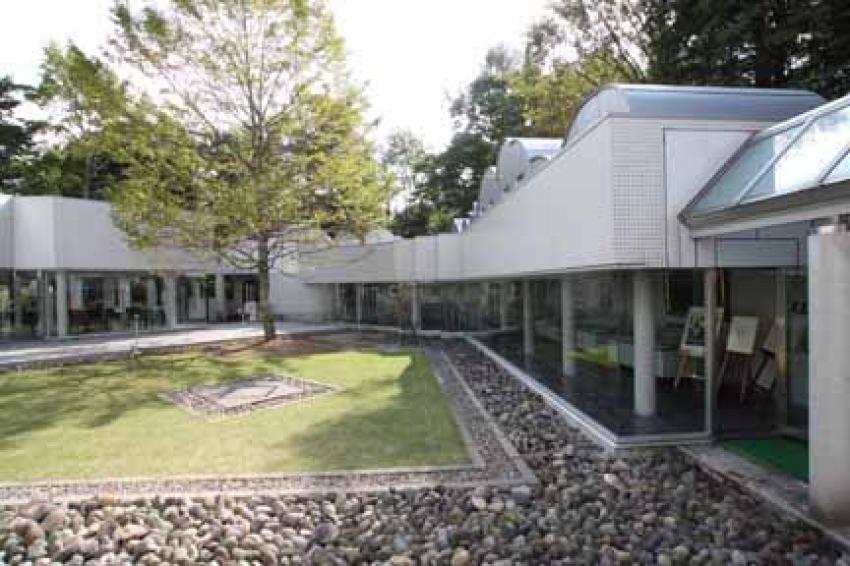
Tasaki Museum of Art
From 1966, HIROSUKE had a studio in Mikasa, Karuizawa, and left behind many works including Tateshina, Yatsugatake, Myoko and Lake Nojiri, with Asama and Shirakaba lakes in the background. He also had many friends during his lifetime who were artists and writers, and it is said that his works alone represent the history of the art world from the early days to the present day.
The museum is an art museum that permanently exhibits his posthumous works and materials on his cultural and cultural associations, while at the same time providing a venue for cultural and social activities such as public exhibitions, lectures, and research meetings.
SPOT 25
Oiwajuku Folk Museum

Oiwajuku Folk Museum
The Oiwajuku Folk Museum was opened in July 1985 to maintain and preserve the unique local culture of Oiwajuku, which flourished as an inn town during the Edo period, and the western part of Karuizawa Town.
It is located at the east exit of Oiwajuku, in a lush green environment adjacent to Sengen Shrine and Oiwake Park. The exterior of the building is made in the style of an inn, and the interior is wooden, creating a calm atmosphere of the Edo period.
The museum's interior
displays materials related to Oiwakejuku from its earliest days to the present day, focusing on Oiwakejuku in the early modern period under the theme of "History and Culture of the Highway: From the Primitive and Ancient Times to the Present Day in Oiwake," as well as a corner where visitors can hear "Oiwambushi," a traditional folk song of Karuizawa, a restored part of Tsugaruya, a Masugata teahouse whose building still remains today, and dioramas and models of the inn, side main lodges, inns, and other buildings. The exhibition also features a diorama and models of the inn, its side main lodges, and inns, and introduces the history of the inn and the region in an easy-to-understand manner.
In addition, the museum holds special exhibitions related to Oibu every year, as well as educational lectures and summer concerts in the summer.
SPOT 26
Hori Tatsuo Literature Memorial Hall
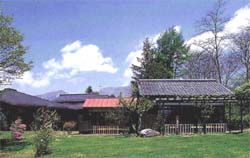
Hori Tatsuo Literature Memorial Hall
Born in Tokyo in 1905, Tatsuo Hori, a writer active in the early Showa period, visited Karuizawa in 1923 at the age of 19. Since then, he has visited the area every year and left numerous works set in Karuizawa. He settled in Oibu from 1944 and died in 1953 at the age of 49 in a house he built here.
This memorial hall is a literary museum that exhibits and stores materials related to Tatsuo Hori, a writer who loved Karuizawa very much. The museum has an exhibition room where visitors can learn about the life and literary background of Tatsuo Hori, with manuscripts, letters, first editions, and beloved items on display, a residence where Tatsuo spent the last years of his life, and a library where his favorite books are stored. In the reading room, visitors can browse through books related to Tatsuo Hori.
Visitors can also enjoy walking in the area around the museum, which is associated with Tatsuo Hori.
SPOT 27
Nakasendo 69th Street Museum
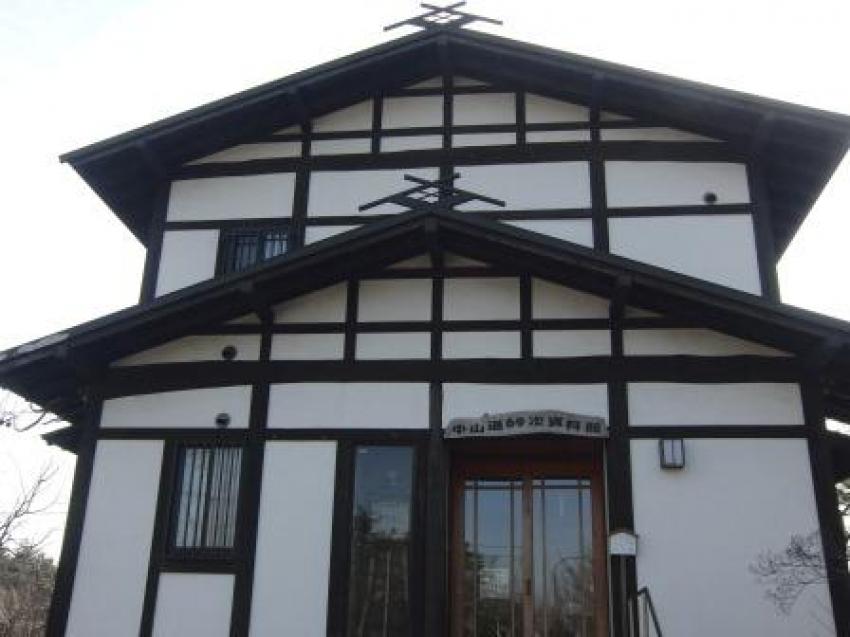
Nakasendo 69th Street Museum
This museum exhibits materials related to the history, geography, and literature of the Nakasendo route, as well as pictures, photographs, and ukiyoe woodblock prints, in an easy-to-understand manner. Visitors can experience a journey as they tour 69 inns from Edo's Nihonbashi to Kyoto's Sanjo Ohashi Bridge. The director's stories are also interesting!
In the garden of the museum, there is a promenade that recreates the 69th road from Edo to Kyoto, and visitors can enjoy a 15-minute walk along the road.
Other Model Courses
Pickup Site






